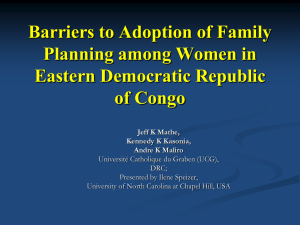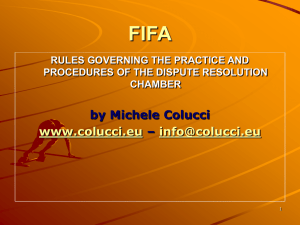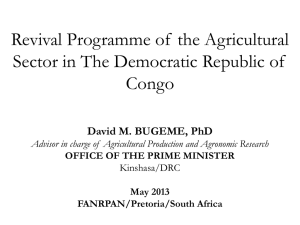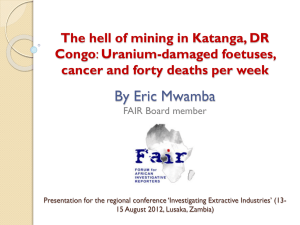PPT
advertisement
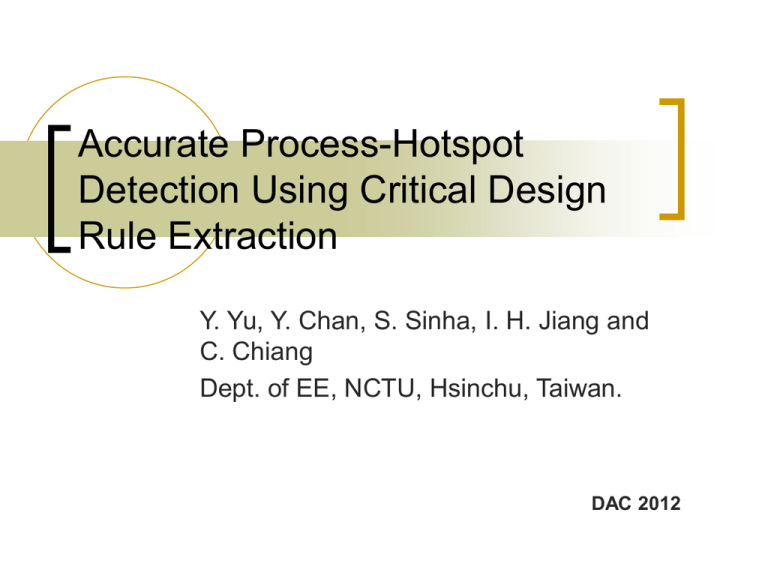
Accurate Process-Hotspot Detection Using Critical Design Rule Extraction Y. Yu, Y. Chan, S. Sinha, I. H. Jiang and C. Chiang Dept. of EE, NCTU, Hsinchu, Taiwan. DAC 2012 Outline Introduction Preliminaries Our Hotspot Detection Framework Modified TCG and Critical DRC Rule Extraction Pre-filtering Finalization Experimental Results Conclusion Introduction In advanced fabrication technology, the subwavelength lithography gap causes unwanted layout distortions. Even in a DRC-clean layout, some layout patterns are still sensitive to the lithographic process. These potentially problematic layout patterns, referred to as process hotspots, should be replaced with yield-friendly configurations. Process-hotspot detection has become a crucial issue. Introduction DRC-based hotspot detection first converts the topological features of process hotspots to design rules and then analyzes the DRC report to identify hotspots. This paper propose an accurate process-hotspot detection framework based on the DRC-based approach. Introduction Preliminaries Design Rule Checking Design rule are a set of parameters to guarantee the manufacturability of a layout. Preliminaries Modern DRC tools can perform general dimensional checks within a single polygon or between polygon edges. Given a runset file (design rules for a specific process) and a layout, a DRC tool reports design rule violations. Design rules can be expressed by equations and/or inequalities. Preliminaries Problem Formulation The Hotspot Detecting Problem: Given a hotspot pattern and a layout, our goal is to report all hotspot locations with eight possible orientations in the layout. Our Hotspot Detection Framework Modified TCG and Critical DRC Rule Extraction To use the aid of DRC to realize hotspot detection, extract design rules from the given pattern. Extract only critical design rules. There are two tasks: To model the given pattern by a good representation that can reflect topological features. To select critical features from the representation and translate them to design rules. Modified TCG and Critical DRC Rule Extraction Extend TCG (transitive closure graph) representation to accomplish the first task. TCG uses a pair of constraint graphs, horizontal constraint graph Ch and vertical constraint graph Cv to record geometric relations among modules. Modified TCG and Critical DRC Rule Extraction In order to consider spacing by TCGs, we tile the pattern. After horizontal tiling, a pattern is composed of block tiles and space tiles. Modified TCG and Critical DRC Rule Extraction To fully represent a given pattern, we adopt not only a horizontal MTCG but also a vertical MTCG. Modified TCG and Critical DRC Rule Extraction To accomplish the second task, extract the critical topological features. First focus on the internal topological relations. These primary rules can be expressed by equations. Rule 1 - the width and height of a block tile: Find the dimension of each block tile that does not touch the window boundary. Extract all block vertices whose incoming and outgoing edges are connected to space vertices. Modified TCG and Critical DRC Rule Extraction Rule 2 - the distance between two adjacent block tiles: Find the dimensions of all space tiles that do not touch the window boundary and are located in between block tiles. Extract any space vertex which lies in between exactly two block vertices. Modified TCG and Critical DRC Rule Extraction Rule 3 – the diagonal relations between two convex corners of block tiles: Extract space vertices whose in and out degrees are larger than two and also check their diagonal relations and distance. Modified TCG and Critical DRC Rule Extraction The primary rules can handle most patterns. However, the primary rules may be insufficient for some special cases. Modified TCG and Critical DRC Rule Extraction Add two secondary rules for tiles that touch the window boundary. Rule 4 – the space or block tile with one edge touching the window boundary: Identify boundary tiles. Modified TCG and Critical DRC Rule Extraction Rule 5 – the space tile with two edges touching the window boundary or space tiles: Extract the dimensions of space boundary tiles. Modified TCG and Critical DRC Rule Extraction The secondary rules can handle the cases that the primary rules cannot. Rule 4 for “T” and “I” Rule 5 for “Stairs” and “L” However, rule 5 is too general and may induce too many design rules. Hence, if we can extract critical rules based on the first four types of rules, we do not generate rules for rule 5 to speed up the subsequent process. Modified TCG and Critical DRC Rule Extraction A pattern may have eight possible orientations. Divide these eight orientations into two sets. Generate a runset file for each set and run DRC twice to obtain the locations that hit any generated rule. Pre-filtering Based on the DRC results and pattern properties, pre-filtering is applied to find the potential hotspot locations. Given a pattern, a reference point is set to the bottom-left corner of its pattern window. Each extracted rule is modeled as a rule rectangle. Pre-filtering Use a variable hit[x][y] to record the total number of rules matched at (x, y). Once the hit value is equal to or greater than the number of rule rectangles, we find a potential hotspot location. Finalization Some non-hotspot locations might pass pre-filtering. Vertically slice the layout inside the window. If the number of generated slices or the area of each tile within each slice is different from the given pattern, it is not a hotspot. Experimental Results Experimental Results Experimental Results Experimental Results Experimental Results Conclusion This paper propose an accurate process-hotspot detection framework. The experimental results show that their approach can reach 100% success rate and superior efficiency.
